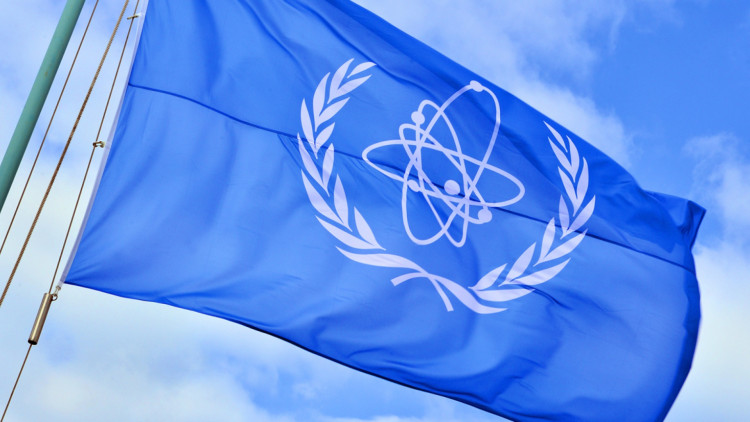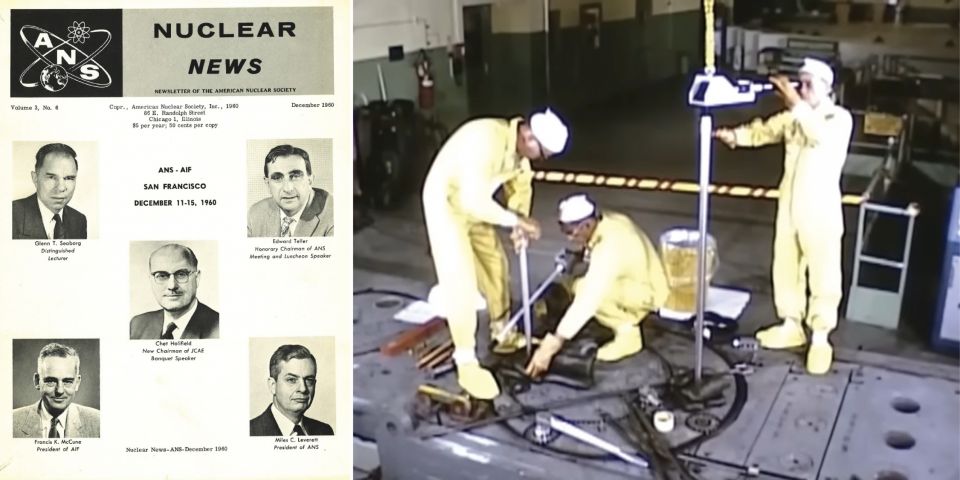Chernobyl Through the Mist of Decades
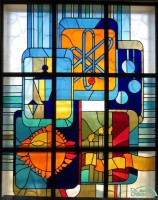
Courtesy SSE ChNPP.
In the administration building of the Chernobyl nuclear power plant, a number of stained glass windows (as seen to the right) recall the optimistic tone of industrial Soviet-era art that can still be viewed today at power plants around the former USSR. That these are well preserved is not the result of a specific effort, but instead because of the essential abandonment of large parts of the facility, and even the entire region, after the most serious nuclear reactor accident in 1986 in history.
RBMK
The particular type of nuclear power plant constructed at Chernobyl is so key to the accident that occurred that no account of the event can be written without full detail of the plant itself. The particular type, known in Soviet era terms as the "RBMK-1000," was a large "pile" reactor (using, literally, a pile of graphite bricks to slow neutrons to the speed and energy to fission uranium-235), which incorporated thousands of fuel and coolant channels. The water passing through the core was boiled by the nuclear heat and passed to steam drums where any entrained water was removed. The steam then went to drive two identical turbine generators (to provide power to the grid).
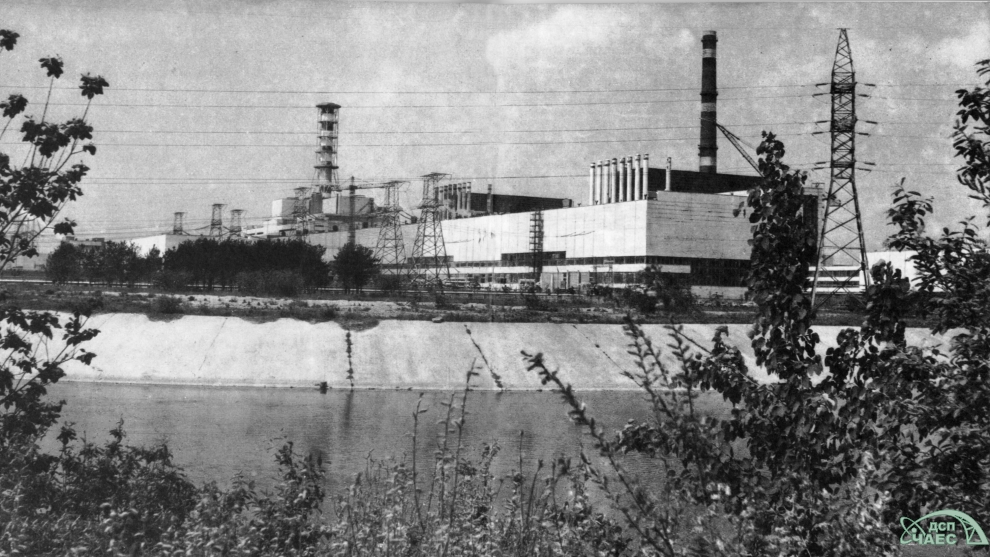
Chernobyl nuclear power plant. Unit 1 is nearest the camera; the ill-fated Unit 4 furthest (Courtesy SSE ChNPP)
The Chernobyl complex, in what is now the independent Ukraine, was built over a long enough period that its four nuclear units (each "unit" is a combination of one reactor and two turbine generators) were of different designs, even though built side by side. The first two units were the earliest design, while Units 3 and 4 were of the second generation of RBMK-1000, which were intended to have an improved confinement for the reactor in case of accident. Even so, the structure was intended to contain only the rupture of two of the tubes in the reactor-which actually had about 1600 tubes.
The reactor core used in this type of plant was physically so large (a cylinder 21 feet tall and 36 feet wide) that power could be increasing rapidly in one part of the core (either "radially" or on one side, or else "axially" meaning at the top or bottom) while decreasing in another. This loose coupling of the core, combined with serious deficiencies in the control rods used to control and shut down the core, also played an important role in the accident that was to occur.
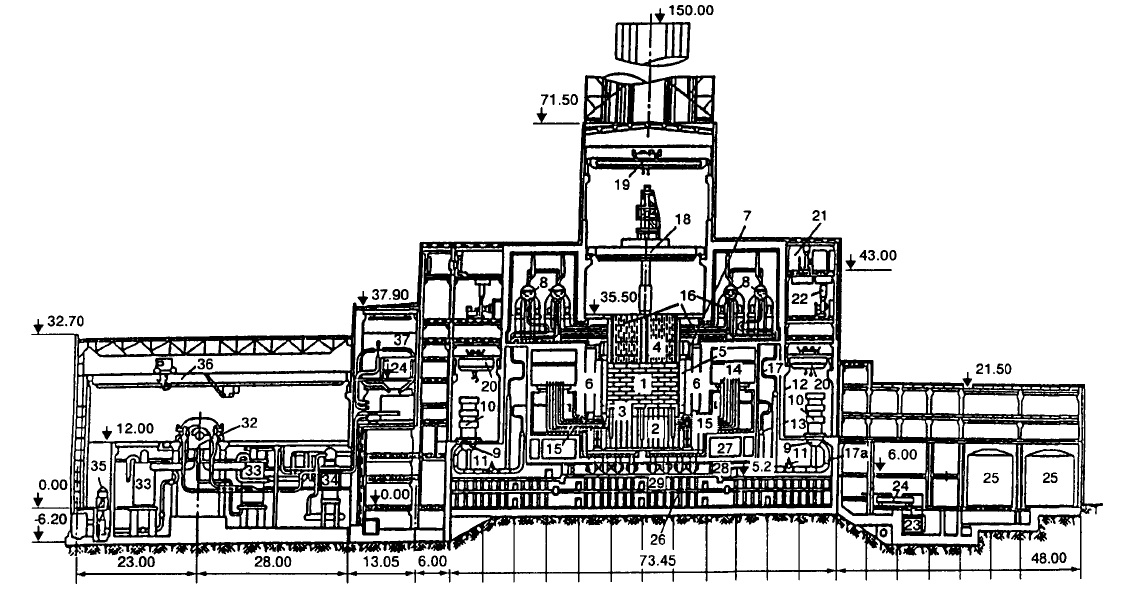
RMBK-1000 cross section from INSAG-7 report. Reactor core at (1); 1000 ton core lid at (4); steam drums at (8); refueling machine at (18); turbine generator at (32). Note that while certain spaces are intended to contain releases of steam, there is no unified or single, integral containment structure as in most Western reactors.
A test
On April 26, 1986, operators at Unit 4 of Chernobyl were attempting to conduct a fairly unusual test in which the rate of change of water flow through the core, as well as the functioning of certain emergency cooling systems, would be analyzed as some of the pumps putting water through the core slowly wound down in speed. In order to establish the conditions for the test, the operators blocked safety functions in some instances while ignoring the plant computer's attempts to normalize the power distribution in the core. Delays in the test (caused by the grid requiring power from Unit 4 longer than anticipated before it was tripped off for the test) caused the operators to get the core into an unstable condition (with most of the power being generated at the top, and with relatively hot water entering at the bottom) while determined to complete the test after the need for power was over. It must be said here that accounts of specific control room actions differ-and that not all workers involved survived.
As the time for the test approached, the operators disabled or bypassed several installed safety interlocks that, if actuated, would have interrupted the test. These actions were easily enough taken. At just after 1:20 am on April 26, the test was initiated by tripping the running turbine generator and pushing a separate button to initiate equipment being tested. The plan was to have the reactor scrammed simultaneously, but this did not occur; the reactor scram button AZ-5 was not pushed until about 30 seconds later.
Operators heard "banging sounds" from the area of the reactor, which was probably the initial rupture of tubes in the reactor. Exposing hot, disintegrating fuel to the steam led to an immediate and violent reaction between the metal and steam, raising the pressure in the core structure. Almost immediately a large explosion was heard; it was this that disassembled the core and launched the 1000-ton reactor lid off the top, breaking all the pressure tubes in the reactor. A second explosion was heard shortly-this has been assumed to be the combustion of hydrogen released in the accident.
The reactor was demolished and so was much of its building. Multiple fires had started. The turbine building had been pummeled by debris and was also on fire, threatening the connected Unit 3 equipment areas. Approach to the reactor was impossible because of the high radiation, although two control room operators and two trainees approached or (in the case of the trainees) entered the reactor space and received fatal doses of radiation. Large amounts of radioactive materials were being released because the core itself was essentially exposed to the atmosphere. The most serious nuclear accident in history had occurred.
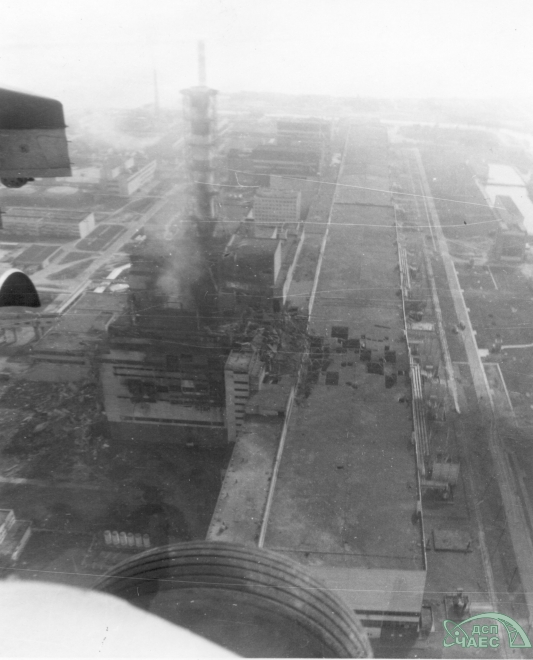
Chernobyl Unit 4 the morning after the accident, taken from a helicopter. Note damage to reactor building and turbine building. (Courtesy SSE ChNPP)
First response, and silence
The immediate response, of course, at the scene was to extinguish the fires (with the help of outside fire brigades) and determine the condition of the reactor. Cooling water for the core was put on at a high rate, but sometime later was turned off when it was found that it simply was flooding the lower levels of the plant (without cooling the seriously deranged core much) and the worry was expressed that it might flood the other units. Unit 3 shut down shortly after the accident, as it was immediately adjacent, but Units 1 and 2 operated until the next day. Some areas of the other units were contaminated by the air handling systems spreading material released in the accident. (Much later, nitrogen gas was introduced to the spaces under the reactor to cool it and the melted fuel debris).
As government forces were mobilized, it was determined to attempt to quench the core by dumping materials on it either by helicopter or by hand. Various materials (eventually about 5000 tons) were dumped on the core area over the next weeks through May 10. In fact, this action contributed in an indirect way to releasing material to the atmosphere, it is thought, by first insulating the core and allowing temperatures to increase, which led to a spike in atmospheric releases again several days after the accident. The work was successful in eliminating the chance of any recriticality of the destroyed reactor, however, although a great deal of molten material had poured into myriad spaces below the reactor (where radiation levels were 8000 to 10,000 Roentgens per hour). Between the initial explosion/accident and the quenching work, as many as 31 people died from direct injury or high radiation exposure. These were the first fatalities from a commercial nuclear reactor accident in history-and remain as the only ones today.
What the European neighbor nations first experienced was an increase in detected radionuclides coming in and from the air without any known source on their lands, which was met with complete diplomatic silence by the USSR. Very shortly the secret had to be told, and the USSR admitted that a serious nuclear accident had taken place at Chernobyl.
Causes
The Soviet government very quickly responded by condemning the control room operators and plant staff, making statements publicly to this effect and then placing a number of them in prison. Grigoriy Medvedev published a book, entitled Chernobyl Notebook, which carried on this theme of operator error and disregard for safety. The book was published first privately in 1987 and then in France in 1989.
After a short time, however, physical and operational details of the RBMK reactors began to come to light much more than they had before, and even before a year was up some were roundly condemning the reactor design itself as causative. For example, the March 1987 UK Atomic Energy Agency report on the accident specifically called out the positive void coefficient of the reactor at low power levels (a term that means power will automatically increase if water in the core is replaced with steam voids). The report essentially stated that the core was in some conditions unstable and uncontrollable.
By 1991 some of the imprisoned operators had been released and began to tell a story different from that which the old Soviet spokesmen had given-that there had been no procedural violations, that rules which were stated as violated had never existed until after the accident, that interlocks were approved for cutting out in the test procedure, and that the real causes were not due to operator error. The former deputy engineer for Operations at the plant, Anatoly Dyatlov (who set up the test and who was in the control room when the accident occurred), took up the cause of exonerating the operators by publishing widely the opinion that the reactor was in fact inherently dangerous, and that the key fault was the design of the control rods which, when scrammed, first RAISED power briefly before reducing it. This had led at the moment of the pressing of the scram button to a shift in power axially in the core to the bottom; the positive void coefficient (surmised years earlier) caused skyrocketing power in the lower half of the core that destroyed it first, causing an unstoppable series of events leading to the complete demolition of the core. Dyatlov squarely blamed the designers as well as all other people in positions that would have reviewed or regulated the plant designs, saying that the RBMKs should never have been licensed to operate in the first place.
Dyatlov's point of view is essentially supported by the safety changes made to all other RBMK reactors-changes that began even while he was still imprisoned. Generically, the RBMK type reactor became roundly condemned on the world stage, but even so all of the units around the former USSR continued to operate for many years and 11 reactors of this type operate today, albeit with so many complicated backfits and modifications that they cannot be thought of as being the same as 1986 technology. Those units not in Russia have been shut down.
While many other problems were found technically with the RBMK reactor and plant (including fire protection, ability to localize damage, reliability of core cooling, instrumentation, computer analysis, and many more), these were all secondary to the fact that the actual reactor itself was inherently unstable and dangerous. Lack of any sort of safety culture in the Soviet Union's nuclear industry, as we would know it today, played a role in this throughout so that some analysts have labeled Chernobyl not as the failing of a specific design but rather in a large scale as an "Organizational Accident" in which the conditions for any such accident existed long before the actual terminating event.
Voluminous reports were naturally generated and issued worldwide (US NRC NUREG-1250 and INSAG-1 as examples) and later had to be revised (INSAG-7, as replacing INSAG-1, for example) in light of discoveries, admissions and revelations, and new analysis. As usual, the reports issued most closely after the event were those most altered, revised or discarded.
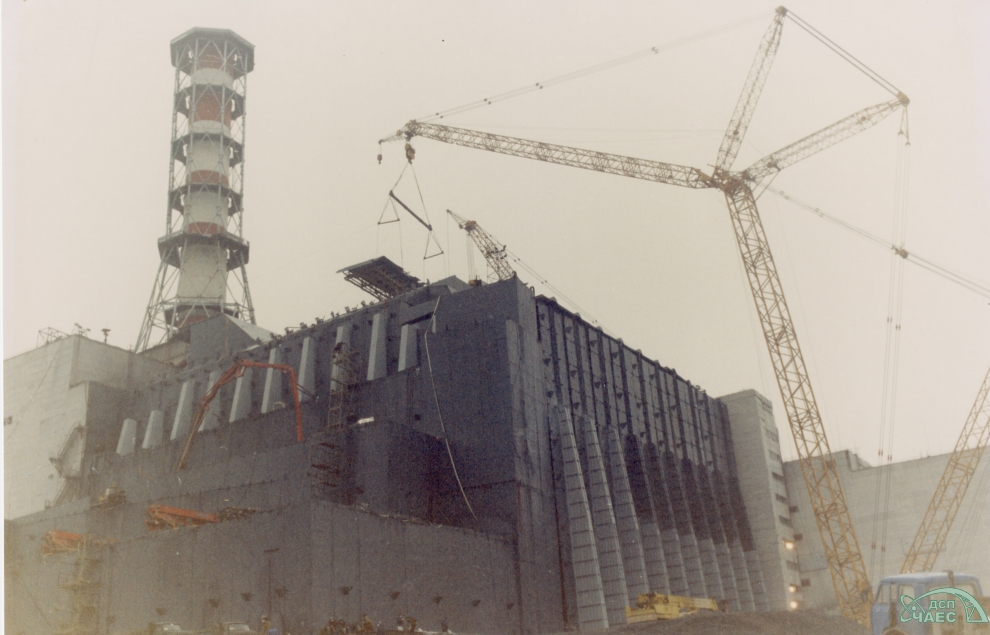
The Chernobyl Sarcophagus (Courtesy SSE ChNPP)
Response, mitigation, entombment
It goes without saying that the officials knew that the plant was releasing radionuclides to the atmosphere, even on the morning of April 27, and shortly the entire nearby city of Pripyat was evacuated. It remains abandoned to this day as no large effort to decontaminate the city has ever been started. A large exclusion zone was set up and about 116,000 persons were displaced by this action. The nearby area in which Chernobyl Units 5 and 6 were being built was more or less purloined by the recovery effort (aided by the mid-1987 cancellation of these units) and many foundations and pits on that site were used to bury contaminated equipment and material.
The famous "Sarcophagus" built over the destroyed reactor over the next several years was intended to last for many more years than it actually did. It was recognized before the middle 1990s that a much more thorough enclosure would be needed, and that a resulting gigantic structure, seen below, is today nearing completion. When finished it will be rolled over the damaged plant encasing it and its previous enclosure.
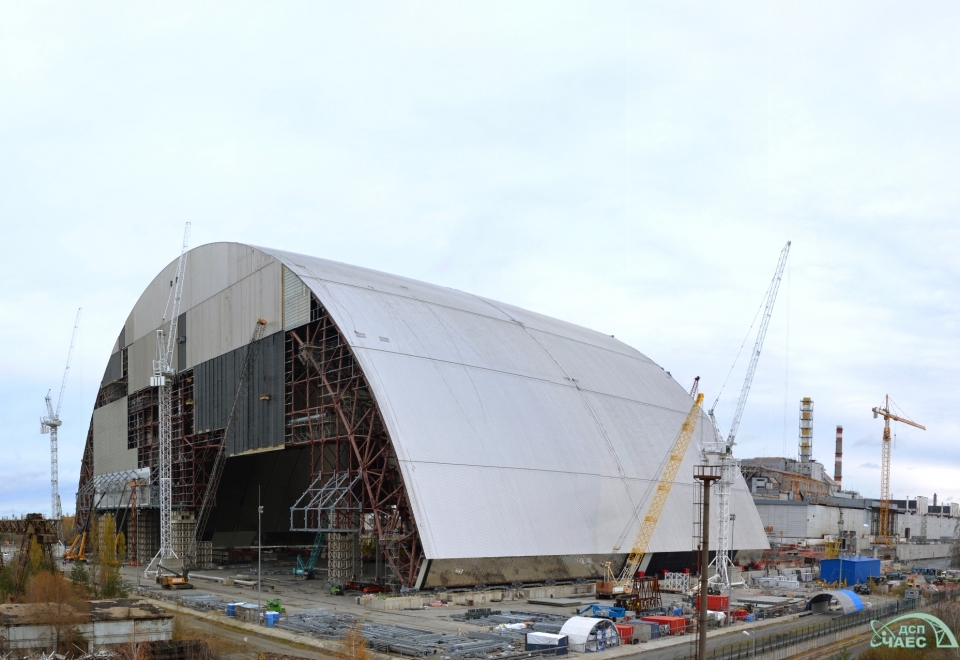
New containment for Chernobyl Unit 4. The enormous scale can be judged by comparison with the construction equipment. (Courtesy SSE ChNPP)
Lessons
In the West-where reactors are not of this type, are well contained, and have redundant backup systems and emergency plans, in addition to plant staffs having safety cultures far superior to any in existence in the mid-1980s Soviet Union-the Chernobyl accident has been thought of by some as so completely impossible here as to be without merit to study. Still, there are valuable lessons to be learned that are widely applicable. Among these are the following:
- No one at any step of the design, construction, operation, administration, maintenance, or regulation processes of the Soviet plants felt as if safety was his or her "number one job" or that "the buck stops here." The Chernobyl accident, viewed as an "organizational accident," is a prime example of what will happen in this situation. Indeed, Dyatlov wrote that there were surely many prior times that other RBMK reactors were just as close to disaster as was Chernobyl-4; it just happened there first. The Russians did of course develop a safety culture, and also turned 100 percent to the pressurized water reactor for commercial power.
- Even though the occurrence of reactor accidents is very small statistically in comparison with the number of reactor-years piled up so far, it is folly to believe that there is no value in providing a fully operable and capable containment for a reactor, designed to handle the maximum possible release of energy from that reactor.
- Clear and immediate communications are essential, both between a plant site and the government bodies and between nations.
Today
While the initial plan for the Chernobyl plant was to have it be no more decontaminated than the surrounding areas, with the damaged unit and parts of the connected Unit 3 fully entombed, today the plant's operating company, SSE Chernobyl NPP, is pushing for a different plan. Instead of having what would have been what the company calls a "brown zone," it wants to decontaminate the entire local area and use some of it for industrial purposes. The company believes that there is money to be made from decommissioning the other units as well as from training on that activity, and that the remote location and installed water and power assets (formerly for the nuclear plants) can serve industrial purposes quite well. It also feels it can reverse the economic burden of maintaining an exclusion zone in the first place.
Meanwhile, plants and animals are flourishing in the exclusion zone, free of disturbance by the former activity and have been widely reported on and studied.
The final chapters on the Chernobyl plant site and the town of Pripyat have yet to be written. Someday there may be wide human activity there again, beyond the decommissioning work on the nuclear plant. If present conditions are any indication, this will come, even if only after many more years.
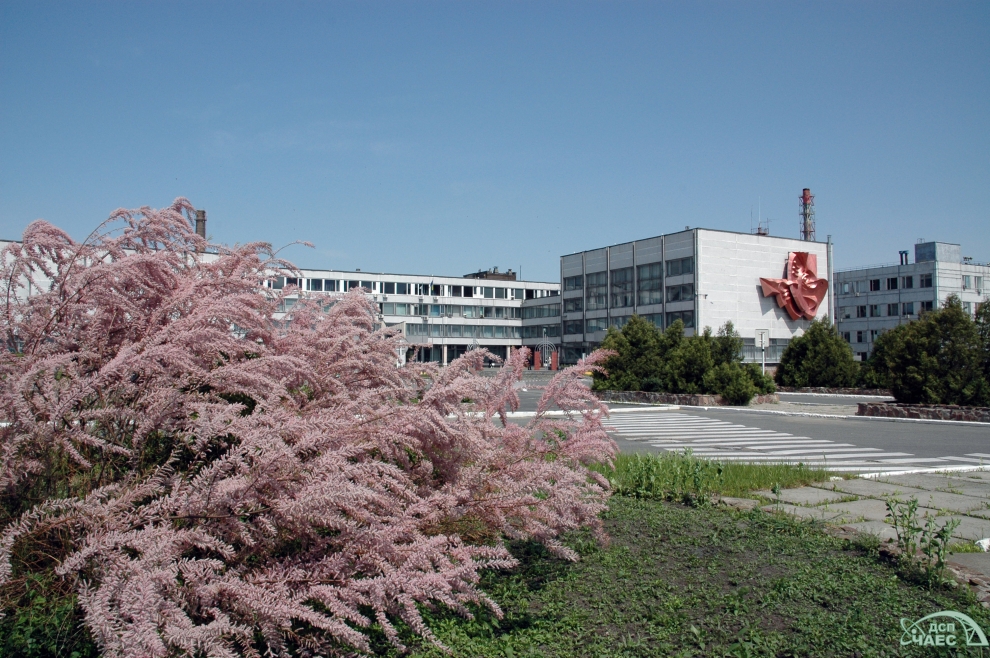
Administration building, Chernobyl NPP (Courtesy SSE ChNPP)
----------
Sources:
"Soviet Nuclear Power Plants." David Katsman, Delphic Associates Incorporated 1986.
NUREG-1250 "Report on the Accident at the Chernobyl Nuclear Power Station" US NRC January 1987
"Chernobyl Design Defects- The British View." Nuclear Engineering International, June 1987
"Lessons from an insider's notebook." James Varley, Nuclear Engineering International, June 1990.
"No easy answers to Chernobyl questions." James Varley, Nuclear Engineering International, June 1991.
"How it was: an operator's perspective" Anatoly Dyatlov, Nuclear Engineering International, November 1991.
INSAG-7 "The Chernobyl Accident: Updating of INSAG-1." International Nuclear Safety Advisory Group (IAEA) 1992
"Why INSAG has still got it wrong." Anatoly Dyatlov, Nuclear Engineering International, September 1995.
"Soviet Nuclear Plants - VVER and RBMK." Research paper by author, privately circulated; October 2015
______________________________________________________________________________________ Will Davis is Communications Director and board member for the N/S Savannah Association, Inc. He is a consultant to the Global America Business Institute, a contributing author for Fuel Cycle Week, and he writes his own popular blog Atomic Power Review. Davis is also a consultant and writer for the American Nuclear Society, and serves on the ANS Communications Committee and will serve on the Book Publishing Committee beginning in June. He is a former US Navy reactor operator.
Will Davis is Communications Director and board member for the N/S Savannah Association, Inc. He is a consultant to the Global America Business Institute, a contributing author for Fuel Cycle Week, and he writes his own popular blog Atomic Power Review. Davis is also a consultant and writer for the American Nuclear Society, and serves on the ANS Communications Committee and will serve on the Book Publishing Committee beginning in June. He is a former US Navy reactor operator.




